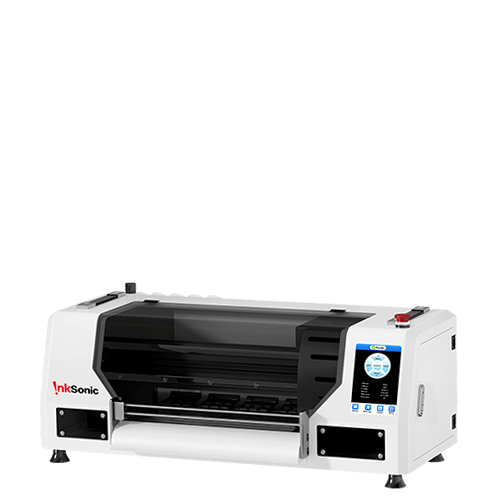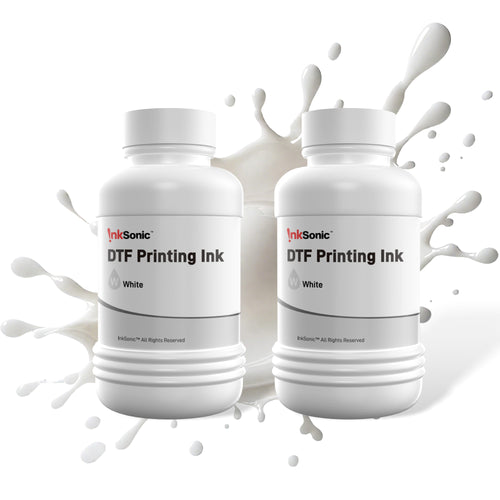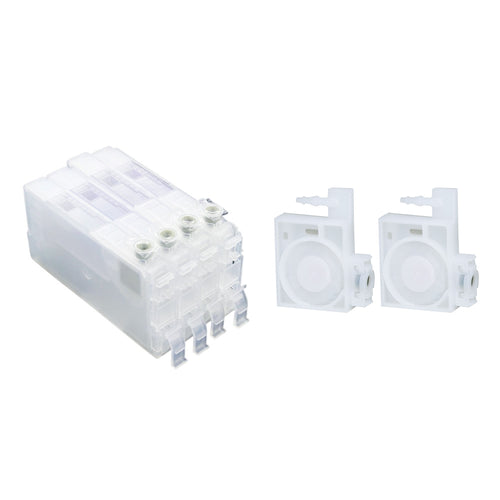What is DTF printing film?
DTF (Direct-to-Film) transfer films are the key components of DTF printing technology. They are the medium where designers print and heat-press designs onto various materials. These films have vibrant colors, durable prints, and precise details. They are a favorite among designers and small businesses.

This guide will cover everything about DTF films. It will explain their structure, types, and uses. It will also give tips on how to choose the right film for your projects.
🐼: If you want to start a t-shirt business, check our blog: " Why January is the Best Time to Start Your T-shirt Business. " To learn DTF t-shirt printing costs, read " Understanding DTF Printing Costs for Each T-shirt. "
DTF Film: The Key Material for Printing
Think of DTF transfer film as a magic canvas for your designs. Printing your artwork onto the film is like transferring it to a transparent stage. Once heat-pressed onto a fabric, the design is permanent, like a gem embedded in it. It stays vibrant and intact. High-quality paper is vital for an artist's work. So, the right DTF film is key to a high-quality print. Let's break down a typical DTF transfer film. This will show you why it's vital to choose the right one.
Structure of DTF Films
Understanding the structure of a transfer film helps you choose the right one for your needs. Here’s the typical structure of DTF transfer films:
-
Inkjet Printing Coating: It's usually white and made of PU. This layer holds the ink and displays the design. The quality of this layer affects the clarity and color saturation of the print. PU is eco-friendly, and safe, and has become widely used today.
-
Adhesive Layer: This layer ensures the design sticks to the fabric when heat-pressed. It stays non-sticky at room temperature. This prevents sticking during transfer, which helps achieve a cleaner, more precise result.
-
Release Layer (Heat/Cold Release): This layer, between the print and backing, helps the film peel off after heat pressing. It ensures smooth separation without damaging the design.
-
Base PET Film: PET is preferred over paper because it is more durable and less prone to deformation.
- Antistatic Coating Layer: This layer prevents static build-up during storage or transport. It ensures the film won't get damaged or cause issues in printing.
Now that you know the structure, let's explore the types of DTF films.
Types of DTF Transfer Films
DTF transfers come in different types, each suited for various needs. Let’s go over the most common types available:
DTF Film Side Options
-
Single-Sided (Glossy Film): This film has the transfer medium only on one side. The smooth surface allows bright, vibrant designs. It's perfect for high-impact visuals.
- Double-Sided (Matte Film): The transfer medium is on both sides. This improves adhesion and makes printing more reliable. It is especially useful for white ink DTF printing. It helps avoid head damage from film slippage or wrinkling.
Peel Methods
-
Cold Peel Film: This cold peel film requires cooling before peeling it off after transfer. It's perfect for designs needing high precision and detail. It keeps the print sharp and undistorted. It’s perfect for intricate logos or complex patterns.
-
Hot Peel Film: You can peel this hot peel film right after heat pressing. It saves production time. It's ideal for bulk printing and high-efficiency work. So, it's great for large-scale production.
- Special Effect Films: These include films like luminous film and metallic ones. They offer unique visual effects. They're great for reflective running gear or metallic stage outfits.
How to Choose the Right for Your Project
Choosing the right film depends on your design needs. Here are some practical suggestions:
Minimalist Designs :
-
Recommended Film: Matte Film
-
Usage: The matte finish suits subtle, clean designs. It's often seen on company uniforms and trendy, minimalist T-shirts.
Trendy or Personalized Designs :
-
Recommended Film: Glossy or Fluorescent Film
-
Usage: Best for bold designs, such as reflective night-running gear and bright birthday t-shirts.
High-Precision, Intricate Designs :
-
Recommended Film: Cold Peel Film
-
Usage: Best for small orders needing sharp, detailed art (like logos or custom pieces).
Bulk Production Needs :
-
Recommended Film: Hot Peel Film
-
Usage: It's great for quick runs during busy times, like Valentine's Day or back to school.
The glossy film will usually work for most applications. But, it's good to have some hot-peel films for high-volume orders.
How to Use DTF Films
Here’s a simple step-by-step guide to using DTF films:
1. Design and Print:
First, design it in software. Then, transfer it to your DTF printer and print it onto the film. Low-quality films might cause the inks to mix or flow, ruining the print. For specific printer setting recommendations, please refer to the latest InkBear tutorial videos or contact InkBear.

2. Apply DTF printer powder
Sprinkle hot melt powder in a uniform layer over the printed design. If the powder doesn't stick well, it might cause uneven prints or even damage to the design. Choose good DTF film and powder adhesion and make sure the power is applied evenly to avoid these issues.

3. Curing:
After powdering, the film must go through a high-temp oven to melt the powder. The film should withstand temperatures of at least 80°C.

4. Heat Press:
Place the transfer film on the fabric. Then, use a heat press machine to apply the right temperature and pressure. Low-quality films might deform under heat, warping the design. So, it's crucial to use high-quality films here.

5. Peel:
Depending on the type of film, you can either peel it off immediately (hot peel) or wait for it to cool down (cold peel). High-quality films should peel off in a way that does not damage the design.

6. 🐼 Before holiday promotions, we often pre-print many designs. Many people store transfer films for a limited time. Some transfer films may release oil or moisture over time. This can affect print quality. But high-quality DTF films stay clean and intact after long storage. So always ask the supplier before buying. Can we store the transfer films for a long time? This is a key factor in ensuring their quality. It surly buys Inksonic films not going to meet these situations.
Conclusion
InkSonic provides efficient and flexible solutions for custom printing and small-batch production. DTF films range from matte to special effects. Each type has its own benefits and suits different design needs. Inkbear hopes this guide helps you choose the right DTF film for your needs and create amazing custom products!





































